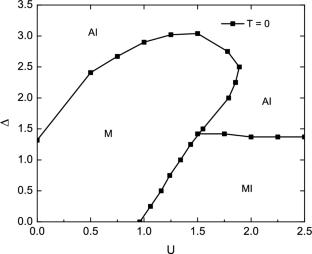半填充安德森-哈伯德模型中金属-绝缘体转变附近的电阻特性
IF 0.8
4区 物理与天体物理
Q3 PHYSICS, MULTIDISCIPLINARY
引用次数: 0
摘要
在本研究中,我们计算了莫特和安德森金属绝缘体转变附近半填充无序哈伯德模型的直流电阻率。我们采用标准久保公式和典型的介质动力学均场理论进行计算。我们的研究探讨了随机电势、现场库仑相互作用和温度对模型内直流电阻率的影响。此外,我们还强调并讨论了在莫特和安德森转变附近观察到的不同电阻率行为。本文章由计算机程序翻译,如有差异,请以英文原文为准。

Resistivity characteristics near the metal–insulator transition in the half-filled Anderson–Hubbard model
In this study, we calculate the dc resistivity of the half-filled disordered Hubbard model near the Mott and Anderson metal–insulator transitions. We employ the standard Kubo formula with typical medium dynamical mean field theory to perform our calculations. Our investigation explores the effects of random potential, on-site Coulomb interaction, and temperature on the dc resistivity within the model. In addition, we highlight and discuss the distinct resistivity behaviors observed near the Mott and Anderson transitions.
求助全文
通过发布文献求助,成功后即可免费获取论文全文。
去求助
来源期刊

Journal of the Korean Physical Society
PHYSICS, MULTIDISCIPLINARY-
CiteScore
1.20
自引率
16.70%
发文量
276
审稿时长
5.5 months
期刊介绍:
The Journal of the Korean Physical Society (JKPS) covers all fields of physics spanning from statistical physics and condensed matter physics to particle physics. The manuscript to be published in JKPS is required to hold the originality, significance, and recent completeness. The journal is composed of Full paper, Letters, and Brief sections. In addition, featured articles with outstanding results are selected by the Editorial board and introduced in the online version. For emphasis on aspect of international journal, several world-distinguished researchers join the Editorial board. High quality of papers may be express-published when it is recommended or requested.
 求助内容:
求助内容: 应助结果提醒方式:
应助结果提醒方式:


